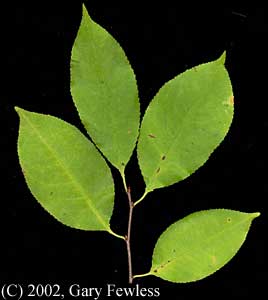In last month’s blog post, we introduced a few ways you can track changes in your woods. Knowing which trees were, are, and will be part of your woods is one way to watch it grow over time. When I was a student in my forestry program, Professor Guries would test our tree identification skills by jumping on a stump, and asking us to identify it on our test. Of course our panic led us to believe this was a ridiculous request, but knowing what trees were on your property can be as important as knowing what is there now. The best example we have of this is in the case of diseases that can persist in your woods over time. If there is a history of oak wilt on the property, you would want to wait several years before planting or encouraging new oaks. Knowing what trees will be part of your woods in the future can be important too. If you are managing for particular wildlife, you want to ensure that certain trees will remain part of your woods into the future. For example, you may want to find evergreen seedlings on the forest floor, so that you will continue to have thermal winter cover for birds and deer in future years.
A simple way for me to share which trees you might have on your property would be to fill this post with lots of photos of trees, leaves, and bark. I love pretty pictures, but they can be deceiving. So instead we’ll walk you through terms used in a tree identification key. When we teach this topic at our woodland owner classes, we use this simple tree identification key . It would be a good idea to print this key to take out into the woods with you. Once you get the hang of it, there are more in-depth keys that get at some of the more rare trees you might find in your woods. The idea behind a tree key is to start with broad choices moving to more subtle choices to eventually narrow down which tree you have in front of you. These choices are based on terms that we’ll define in this post today.
The first terms you’ll need to know is whether your tree is deciduous or coniferous. Deciduous trees are those with broad leaves, while coniferous (cone-bearing) trees have needles. Everything from here on in is quite different, so you will notice in the tree key linked above, you almost have two separate tree keys. Let’s start with the coniferous key.
There are two significant, but fairly simple, concepts to know about coniferous trees, and they both have to do with the needles. When you look at the branch, where the needles are attached, is there just a single needle, or multiple needles? If they are single, the key goes on to ask whether they are flattened & scaly.
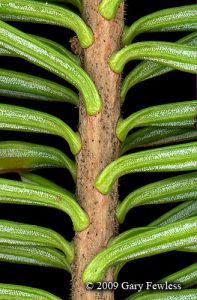

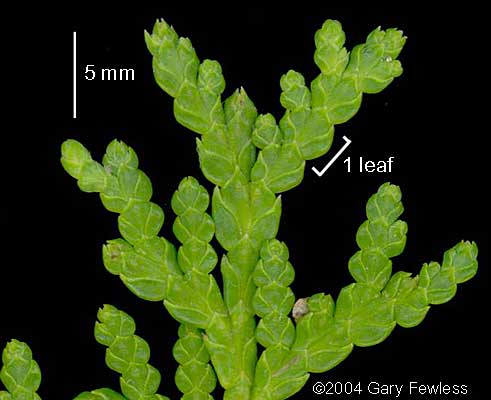
In both the coniferous and deciduous keys, there is the common term of petiole. A petiole is the stalk that connects a leaf to a branch. In a hemlock, there is a short petiole that connects the needle (leaf) to the branch. In the deciduous key, all of those trees have a petiole, but its shape is the important concept. It may ask whether it is round (rolls smoothly between your fingers) or flat or square.
When we move to the deciduous trees, there are a few more technical terms it is good to understand. Let’s start with the leaves. The key will ask whether the leaves are simple or compound. Simple leaves are a single leaf connected to a single petiole. Compound leaves have multiple leaflets connected to a single petiole. At first, it may be deceiving as to what is a branch and what is a petiole, but the petiole grows from the buds on a tree, so finding buds may be helpful. It will also ask whether a leaf has lobes. Lobes are projections from the main part of the leaf, like your ear lobe is a projection from your ear. Also take a look at the margin, or edge, of the leaf. Is the edge smooth (also called entire) or is it toothed like a saw? On occasion the leaf edge will be considered double-toothed. This just means that on each tooth there is a smaller tooth.
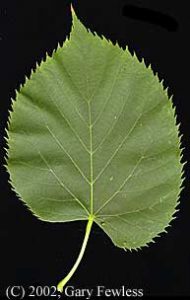
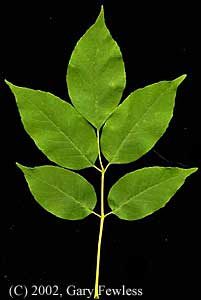
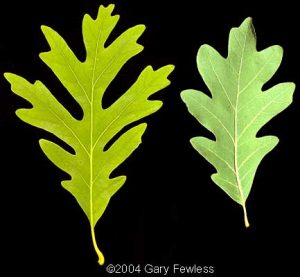

Moving on to the branches of the tree, we look at the pattern of how a tree branches. The first question in the deciduous tree key is whether the tree has opposite or alternate branching. Make sure you look in multiple places on the tree, and determine whether two branches come out of the tree exactly opposite of each other (in a V-shape). If not, it is considered alternate. There are really only two types of commonly occurring trees in Wisconsin with opposite branching: maples and ash. When the key asks about the leaf scar, look at a branch (in fall or winter) and you will be able to see where a leaf has been attached to it. Depending on the tree, leaf scars have very characteristic shapes.
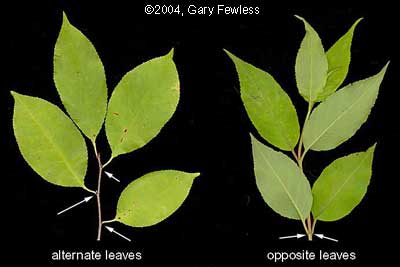
Once you are comfortable identifying the trees on your property, you can begin to count and measure them. In a future post, we’ll give you some techniques to inventory your woods.
Special note: All the photos in this post come from Gary Fewless at the Green Bay Herbarium . This is a great resource if you need a little more help identifying a tree (or other plants) in your woods.
